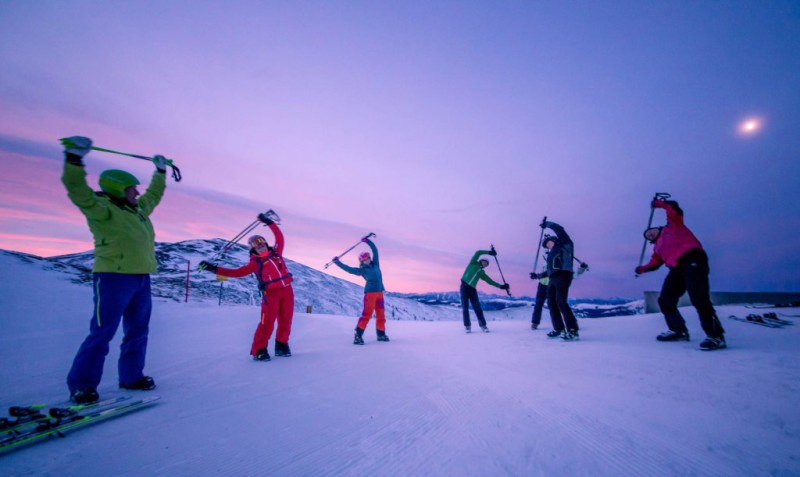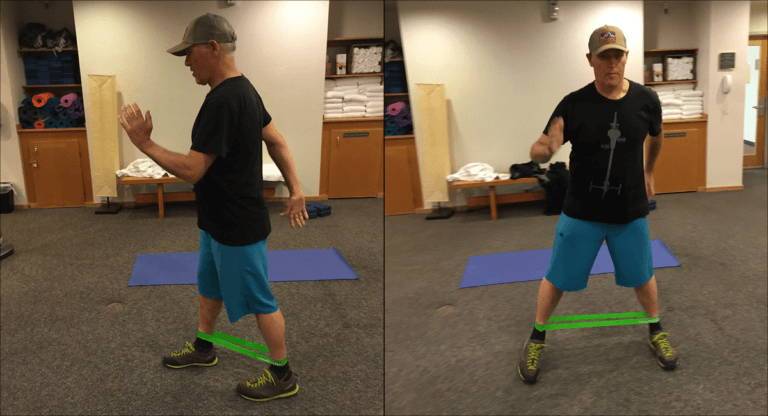There are many people who associate cold and low temperatures with staying at home, warm, with the stove and putting into practice the famous blanket-peli plan. On the other hand, others can’t think of anything else but snow when they talk about winter. We spend the whole year planning which ski resort we are going to and planning our next trip to the snow. That magnificent day is when we are really happy.
It would be a shame if what should be a day full of adrenaline and fun turns into an unpleasant memory due to some injury, right? That’s why we want to make you aware of the importance of stretching all the muscles correctly and performing the exercises for injury-free skiing.
The importance of exercises before and after skiing
Since we have not practiced winter sports for a long time, our muscles and joints are not quite ready to get on skis. To prevent possible injuries, it is very important, before starting to ski, to do some exercises to stretch and warm up the muscles and joints.
Warming up and stretching before skiing, as a general rule, are usually left out of the routine of skiers and today we will explain why they are important.
The low temperatures and cold, typical of the winter season, make the muscles tend to contract and the joints stiffer. Being in a climate with low temperatures the joints, and especially the knees, have to withstand more pressure than they do in spring or summer, so the risk of injury is higher.
The knee is the joint that suffers the most during the ski season. According to experts, one out of three skiing injuries are knee injuries, so it is very important to perform a stretching and warm-up session before getting on the skis to strengthen and prepare the muscles and joints.
Warm-Up Exercises Before Skiing
A good warm-up consists of two parts. The first is to perform a series of movements to warm up joints and muscles. The second is to perform two or three downhill runs where the intensity and speed will increase progressively.
Here are the exercises to warm up and stretch your muscles and joints before skiing:
- Joints:
Perhaps what suffers the most when we practice skiing are the joints of the legs, so it is very important that we have worked them a little before we get down to work, as to make them wake up, to warn them. As if to say “Be careful, you have to work hard today!” we will start with the ankles and go up to the knees and hips. It is the same exercise mechanics for all three joints, circular movements. With the toe of the foot on the floor we rotate the ankle with circular movements, first in one direction and then in the opposite direction. Do this for 15-20 seconds and change feet. To work with the knees what we must do is to bend them slightly and repeat these circular movements. For another 15-20 seconds. And with the hips the same, move them in a circle, as if we were moving a hula-hoop for the same time.
- Legs
The glutes, quadriceps and hamstrings are fundamental, with these exercises we prepare all three.
First we separate our feet, cross our arms and, with a straight back, we bend our knees and go back up to the starting position. Up and down, that’s all. Remember to keep your knees well aligned with your feet and do not bend your back. Repeat 15 times.
With the second exercise we can help ourselves with one of the sticks. We lean on it and, with a straight back, swing one leg back and forth, like a pendulum, without forcing too much but gaining a little height with each swing.
- Abductors
We stand straight with our legs shoulder width apart and our hands on our waists. We will have to do a lateral stride keeping the back straight. The leg on the side to which we do the stride we will bend it no more than 90 º and the leg on the opposite side we will leave it fully stretched. Finally we return to the initial position.
And that’s it, now we can go to the slopes to enjoy all day long, but do not forget to stretch after the exercise!
Stretching Exercises after Skiing
And for after skiing…
- Legs
These are the extremities that we have used the most. We are going to stretch calves and quadriceps, above all.To stretch the calf, we cross our legs and try to touch the tip of the foot with our hands. If you don’t get to touch, it doesn’t matter, the important thing is that you feel tension in the muscle, so don’t force.
We go up and down 10 times and change legs.
To stretch the quadriceps we lean on a cane, with the free hand we grab an ankle and bring it as close as we can to the buttock. Pull and relax another 10 times and change legs.
- Back
The lower back is the area that we have worked the most during the day. To free it from any extra tension we propose a very simple exercise, we sit on the snow (in a secluded place, taking care not to disturb anyone who is still skiing) and, stretching our legs as much as we can, we rest one of the poles on the soles of our feet.
Grasp the pole and, in rhythm with your breathing, raise your back as far as you can. Without forcing or bouncing, gently. Repeat this exercise 5 times in intervals of 10 seconds.
- Arms and neck
Finally, we must also stretch the triceps, to relax the tension in the arms, and the sternocleidomastoid, to avoid uncomfortable neck contractures.
We cross one arm in front of the torso and with the hand we press the elbow towards us.
Press and relax 3 or 4 times and change arms. Then we let the head fall to one side so that we feel tension on the opposite side. We can help ourselves with our hand, pressing down, but carefully and very lightly, without forcing. We hold for 5 seconds and change sides. Repeat each exercise 5 times.
Well, that’s it, it wasn’t so terrible, was it? We have not invested more than 10 minutes and we have ensured that there will be no injuries, no pain or stiffness the next day. Now, yes, we have finished the day’s skiing and we can go quietly to have a drink and talk about today, prepare for tomorrow or simply enjoy the views offered by the environment.


